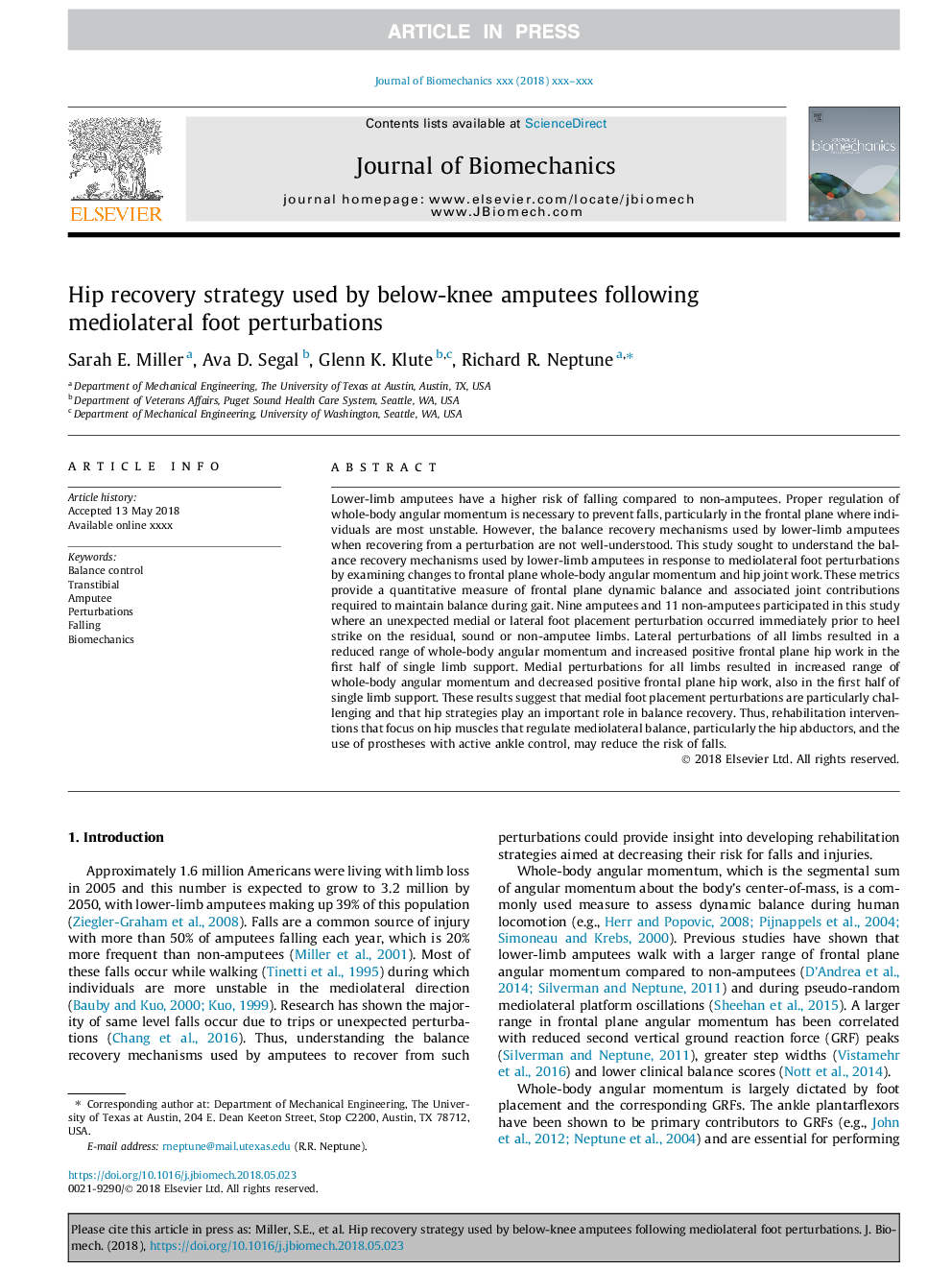| کد مقاله | کد نشریه | سال انتشار | مقاله انگلیسی | نسخه تمام متن |
|---|---|---|---|---|
| 7235726 | 1471088 | 2018 | 7 صفحه PDF | دانلود رایگان |
عنوان انگلیسی مقاله ISI
Hip recovery strategy used by below-knee amputees following mediolateral foot perturbations
ترجمه فارسی عنوان
استراتژی بازیابی هیپ توسط آمپوته های زیر زانو تحت تاثیر مزاج های پا در ناحیه تناسلی قرار می گیرد
دانلود مقاله + سفارش ترجمه
دانلود مقاله ISI انگلیسی
رایگان برای ایرانیان
کلمات کلیدی
موضوعات مرتبط
مهندسی و علوم پایه
سایر رشته های مهندسی
مهندسی پزشکی
چکیده انگلیسی
Lower-limb amputees have a higher risk of falling compared to non-amputees. Proper regulation of whole-body angular momentum is necessary to prevent falls, particularly in the frontal plane where individuals are most unstable. However, the balance recovery mechanisms used by lower-limb amputees when recovering from a perturbation are not well-understood. This study sought to understand the balance recovery mechanisms used by lower-limb amputees in response to mediolateral foot perturbations by examining changes to frontal plane whole-body angular momentum and hip joint work. These metrics provide a quantitative measure of frontal plane dynamic balance and associated joint contributions required to maintain balance during gait. Nine amputees and 11 non-amputees participated in this study where an unexpected medial or lateral foot placement perturbation occurred immediately prior to heel strike on the residual, sound or non-amputee limbs. Lateral perturbations of all limbs resulted in a reduced range of whole-body angular momentum and increased positive frontal plane hip work in the first half of single limb support. Medial perturbations for all limbs resulted in increased range of whole-body angular momentum and decreased positive frontal plane hip work, also in the first half of single limb support. These results suggest that medial foot placement perturbations are particularly challenging and that hip strategies play an important role in balance recovery. Thus, rehabilitation interventions that focus on hip muscles that regulate mediolateral balance, particularly the hip abductors, and the use of prostheses with active ankle control, may reduce the risk of falls.
ناشر
Database: Elsevier - ScienceDirect (ساینس دایرکت)
Journal: Journal of Biomechanics - Volume 76, 25 July 2018, Pages 61-67
Journal: Journal of Biomechanics - Volume 76, 25 July 2018, Pages 61-67
نویسندگان
Sarah E. Miller, Ava D. Segal, Glenn K. Klute, Richard R. Neptune,
